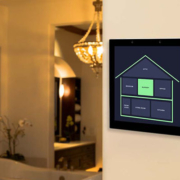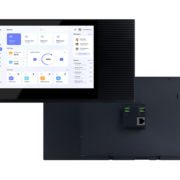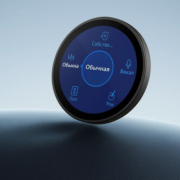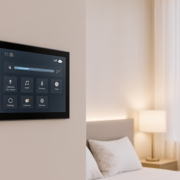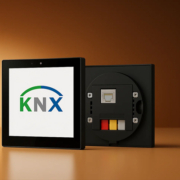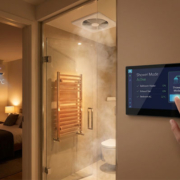What Should You Consider When Customizing PCBA or Selecting a Motherboard?
When developing electronic products—whether for smart home devices, industrial applications, or consumer electronics—the Printed Circuit Board Assembly (PCBA) and motherboard are at the heart of your system. Choosing the right solution is critical to product performance, reliability, and scalability. But how do you make the best choice for your specific project?
This article explores the key considerations when customizing a PCBA or selecting a motherboard, providing valuable guidance for engineers, product managers, and purchasing professionals.
1. Understand Your Application Requirements
Before diving into technical specs, start by clearly identifying what the product needs to achieve. Ask yourself:
- What functions should the device perform?
- Will it require wireless connectivity, such as Wi-Fi, Bluetooth, or Zigbee?
- What sensors or peripherals need to be integrated?
- Are there space or power limitations?
Custom PCBA design allows for greater control over layout, connectors, and performance optimization, while off-the-shelf motherboards may be faster to deploy but less flexible.
2. Processor and Platform Compatibility
The processor choice directly impacts computing power, energy consumption, and software compatibility. Common platforms include:
- ARM-based (e.g., Rockchip, MTK, Snapdragon) – Ideal for low-power embedded or Android-based systems.
- x86-based (e.g., Intel, AMD) – Better for Windows or Ubuntu/Linux with higher processing needs.
- RISC-V or other custom solutions – Suitable for specific IoT or industrial uses.
Make sure your motherboard or custom PCBA supports the operating system and development environment you plan to use (e.g., Android, Linux, Windows).
3. IO Interfaces and Expandability
Another major factor is the number and type of interfaces your application needs:
- USB, HDMI, Ethernet (PoE), CAN, RS232/RS485
- GPIOs for sensors and actuators
- SD card slots, SIM slots, camera interfaces
Customization allows you to tailor these ports for your product use case, which is especially helpful in smart home panels, industrial controllers, or digital signage where space and port functionality are optimized.
4. Form Factor and Mechanical Constraints
Space matters. Always consider:
- Board dimensions
- Mounting hole positions
- Connector placements
- Thermal management needs
For example, Portworld’s 4-inch and 5-inch smart control panels are highly compact yet powerful, designed for integration into walls or custom housings. Custom PCBA services ensure that your board fits your enclosure exactly.
5. Power Supply and Energy Efficiency
Consider whether the system is battery-powered, PoE-enabled, or uses direct AC/DC power:
- Use efficient DC-DC converters
- Evaluate power-saving modes
- Ensure protection circuitry is included
For smart home devices or remote terminals, low power consumption and power stability are critical.
6. Certifications and Compliance
Your product may need to meet various standards, including:
- CE, FCC, RoHS, REACH
- EMI/EMC compatibility
- Safety and thermal compliance
A customized PCBA can help you meet these requirements by embedding necessary shielding, filtering, and components from the start.
7. Cost and Production Volume
Budget is always a major factor. You need to balance:
- Cost per unit
- Engineering and tooling cost
- Time to market
For lower quantities or prototypes, modular motherboards may be sufficient. But for higher volumes, custom PCBA design significantly reduces BOM cost, improves integration, and adds long-term value.
8. Software Support and BSP Availability
When choosing hardware, Board Support Package (BSP) availability is essential. Portworld, for instance, provides deep support in:
- Android SDK & Linux (Debian/Ubuntu) customization
- Kernel optimization
- API development in C#/Python/Java/OT
Having access to a responsive software team ensures smooth development, faster integration, and easier maintenance.
9. Supplier Reliability and Engineering Support
Finally, a critical but often overlooked factor is your hardware partner. Ask:
- Do they have extensive R&D experience?
- Can they provide long-term support and customization?
- Are they responsive and proactive during development?
For example, Portworld offers over 18 years of experience in customized PCBA and smart control panel development, supporting clients across smart homes, commercial buildings, and industrial applications. With an in-house team of over 30 engineers, they deliver rapid prototyping, firmware support, and efficient logistics via CKD/SKD solutions.
Whether you’re building the next smart thermostat, an industrial control system, or an embedded touchscreen panel, the PCBA or motherboard you choose will have a major impact on your product’s success.
By considering application needs, processor platforms, IO configurations, mechanical constraints, power efficiency, certifications, and supplier expertise, you can make a well-informed decision that balances performance, cost, and scalability.
If you’re looking for customizable smart home control panels or professional PCBA design services, Portworld offers a full suite of solutions tailored to your product vision.

